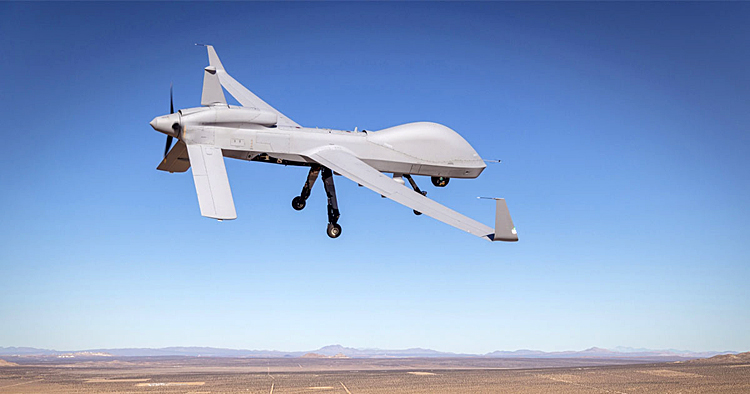INDIAN ARMED FORCES CHIEFS ON OUR RELENTLESS AND FOCUSED PUBLISHING EFFORTS

The insightful articles, inspiring narrations and analytical perspectives presented by the Editorial Team, establish an alluring connect with the reader. My compliments and best wishes to SP Guide Publications.

"Over the past 60 years, the growth of SP Guide Publications has mirrored the rising stature of Indian Navy. Its well-researched and informative magazines on Defence and Aerospace sector have served to shape an educated opinion of our military personnel, policy makers and the public alike. I wish SP's Publication team continued success, fair winds and following seas in all future endeavour!"

Since, its inception in 1964, SP Guide Publications has consistently demonstrated commitment to high-quality journalism in the aerospace and defence sectors, earning a well-deserved reputation as Asia's largest media house in this domain. I wish SP Guide Publications continued success in its pursuit of excellence.
- Indian Air Force Aims for Full Indigenous Inventory by 2047 — Air Chief Marshal A.P. Singh
- General Upendra Dwivedi takes over as the Chief of the Army Staff
- Rajnath Singh assumes charge as Defence Minister for the second consecutive term
- Admiral Dinesh K. Tripathi assumes Command of the Indian Navy as 26th Chief of the Naval Staff
- Prime Minister witnesses 'Bharat Shakti' – a Tri-Services Firing and Manoeuvre Exercise in Pokhran, Rajasthan
GA-ASI Completes Final Qualification Test for HFE 2.0 Engine
200-HP Heavy Fuel Engine Will Be Used for Gray Eagle 25M

On November 13, 2024, General Atomics Aeronautical Systems, Inc. (GA-ASI), completed its final qualification test for its new 200-horsepower heavy fuel engine at its El Mirage, California, flight facility. The Heavy Fuel Engine (HFE) 2.0 is a highly reliable low-maintenance engine with a 40 percent increase in service life providing longer maintenance-free operational periods. The engine will provide the horsepower and electrical power required to meet the demanding performance needs of the new Gray Eagle 25M for Multi-Domain Operations (MDO).
The three-week qualification test of the HFE 2.0 engine is aligned with the Federal Aviation Administration's endurance test requirements (FAA 14 CFR 33.49) as the FAA's primary performance standard for engines to be used in commercial aviation. Over the last 18 months, HFE 2.0 excelled in strenuous durability testing that included 2,450 full power cycles simulating high stress conditions during three extensive test profiles of 200, 400, and 651 hours. Additionally, the engine completed 50 hours of flight testing across the flight envelope.
"This test is the culmination of the extensive durability and flight test program for the HFE 2.0 engine," said GA-ASI President David R. Alexander. "It's been great to see the outstanding test results that have validated the design and development of the HFE 2.0 engine we have worked on so passionately for the past seven years and to bring this world-class engine to the Gray Eagle fleet."
GA-ASI and its General Atomics Europe affiliate partnered with global leaders in high-performance engines — supported by propulsion technology innovator Cosworth — to develop an engine on the company's internally funded research and development program. GA-ASI also brought in General Atomics Electromagnetic Systems to design and build the engine's dual brushless generator, which will dramatically reduce field maintenance and is designed to be a drop-in replacement for the existing generator. The enhanced generator will deliver over 50 percent more electrical power to support newly available payloads for the MDO mission.
After completion of the FAA engine endurance test, next steps call for the US Army certification process to allow authorization of the HFE 2.0 for use on the existing fleet of GA-ASI's Gray Eagle Extended Range (GE ER) Unmanned Aircraft System (UAS) as a replacement for the 180-horsepower engine that is reaching its end of life. HFE 2.0 is also the cornerstone of the modernized Gray Eagle 25M (GE 25M) UAS currently being produced under a US Army-funded program to support future MDO UAS missions.





